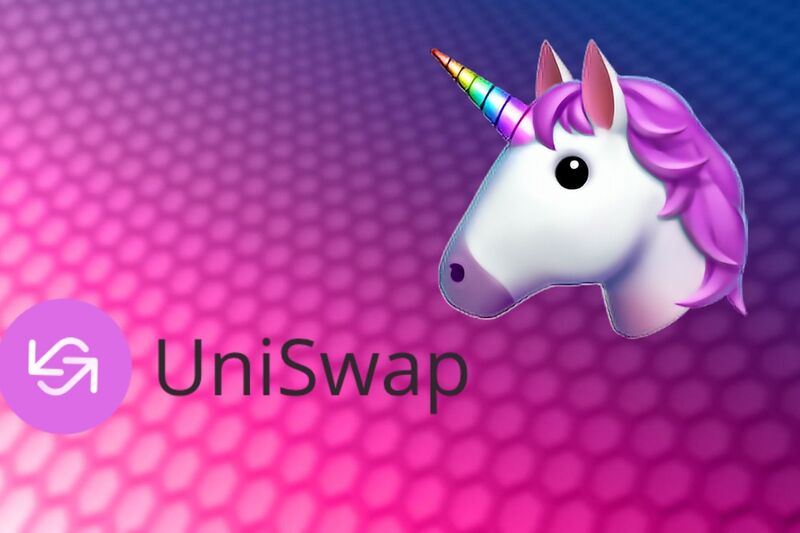
The native token of major decentralized exchange Uniswap (UNI) is outperformed today by its competitors after it launched its much-anticipated v3 yesterday.
At 7:49 UTC, UNI is down 5% in the past 24 hours and 3% in a week, trading at USD 41.5. As such, it has the 7th highest (per Coingecko) 24h drop among its peers, preceded by pancakeswap (CAKE)’s 7%.
Many of its competitors are recording strong increases in this period, lead by 1INCH’s 32%. Blackpearl token (BPLC) follows it with 28%, and other tokens of popular decentralized exchanges are green too, such as SUSHI (7%), CRV (5%), 0x (5%), and multiple others.
Per Ethereum-based Uniswap, their new version offers “unprecedented” capital efficiency for liquidity providers (LPs), improved execution for traders, and “superior” infrastructure for DeFi.
According to their blog post, Uniswap v1 was launched in November 2018 as a proof of concept for automated market makers (AMMs), a type of exchange where anyone can pool assets into shared market-making strategies, and this was followed by v2 in May 2020. This version facilitated over USD 135bn in trading volume in less than a year, they said.
Layer 1 (L1) Ethereum mainnet launch of v3 is now out, with Layer 2 (L2) launch on Optimism “set to follow.” (L1 is the base protocol (e.g., the Ethereum blockchain), while L2 is any protocol built on top of it.)
Per the announcement, Uniswap v3 introduces:
- concentrated liquidity, allowing LPs to concentrate their capital within custom price ranges, meant to provide larger amounts of liquidity at desired prices;
- non-fungible liquidity – liquidity positions are no longer fungible and are not represented as ERC20 tokens in the core protocol, so LP positions will be represented by non-fungible tokens (NFTs);
- capital efficiency, allowing the capital saved to be held externally, invested in different assets, deposited elsewhere in DeFi, or used to increase exposure within the specified price range to earn more trading fees;
- range orders – a new order feature to complement market orders, enabling LPs to deposit a single token in a custom price range above or below the current price;
- three fee tiers per pair — 0.05%, 0.30%, and 1%;
- advanced oracles.
Uniswap founder Hayden Adams noted additional details related to LP positions now being NFTs, as well as possibilities yet to come.
5/
Artists can compete to create the best on-chain SVG generator which will be used in the next season, w/ the winner chosen and paid out by Uniswap gov
Future generators can use any on-chain data they wish on top of what was used in season 1
Should be pretty fun 🙂
— Hayden Adams 🦄 (@haydenzadams) May 5, 2021
Uniswap v3 license limits the use of the v3 source code in a commercial or production setting for up to two years.
The Uniswap v2 Protocol will remain functional and available for use as long as the Ethereum network exists, said the FAQ, but the team expects the advantages of v3 to draw a majority of liquidity and trading volume away from v2. Therefore, migrating v2 liquidity is not required.
ShapeShift CEO Erik Voorhees already announced that the v3 is integrated into the platform for decentralize exchange (DEX) trading, and so did liquidity aggregator 0x and investment interface for DeFi Zerion.
Meanwhile, Martin Köppelmann, Co-Founder and CEO at Gnosis, said the new version gives more control to the users, while George Harrap, Co-founder of Step Finance, stated it will bring forth a more efficient use of capital. According to Hisham Khan, CEO of Cryptocurrencies.AI, arguing that this an upgrade for DEX’s in general, possibly fuelling the rise of DEX adoption.
Framework Ventures co-founder Vance Spencer called this launch the beginning of “the paleozoic era of DeFi capital efficiency,” referring to a time in Earth’s history marked by massive changes.
The paleozoic era of DeFi capital efficiency begins today with the launch of v3
Once we get to cross-margined derivatives via @futureswapx / @synthetix_io and undercollateralized loans via @useteller this year, DeFi's capital efficiency will be as good/better than CeFi https://t.co/1opmve5szf
— Vance Spencer (@pythianism) May 5, 2021
But there also may be challenges ahead.
“While an exciting development for the DeFi space, it will be interesting to see what Uniswap v3’s user interface updates look like and how they tackle the potential challenge in regards to complexity of the upgrade,” said Blake Ho, Chief Operating Officer of DeFi aggregator Furucombo.
Uniswap v3 will inevitably lead to a market divergence, according to Kadan Stadelmann, Chief Technology Officer of Komodo (KMD), but the “changes look like they will make it more difficult for the average Uniswap liquidity provider but easier for professional market makers. Will other DEXes adopt a similar model to become more like Uniswap v3, or will they choose to stick with their existing models? That’s what a lot of people are wondering at the moment.”
Also, some commenters, like Dragonfly Capital managing partner Haseeb Qureshi, claims that the v3 seems to be more gas expensive than v2. On the other hand, Georgios Konstantopoulos, research partner at crypto-asset investment firm Paradigm, argued that deploying a new pool is expensive, and that “if you are complaining about the gas costs of deploying a v3 pool, you are ngmi [not going to make it].”
Meanwhile, there are some praising the competitor SUSHI’s interface, suggesting Uniswap’s is outdated in comparison.
(Photo : asiacryptotoday)

